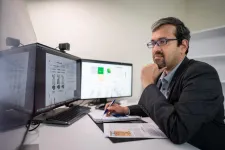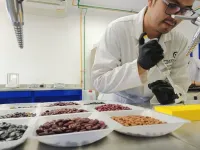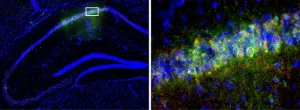(Press-News.org) Myoung-Hwan Kim, an assistant professor in the Department of Physics and Astronomy at Texas Tech University, has been awarded a National Science Foundation grant in the field of materials research (DMR) related to quantum information science (QIS).
An emerging field of research, QIS involves studying the transmission of information through quantum mechanics principles. Kim’s research will examine the influence of magnetism and topology on quantum particles delivering information. Kin’s award is one of two Texas Tech recently received from the NSF for QIS research. The other was awarded to Lu Wei, an assistant professor in the Department of Computer Sciences.
“When a magnetic field is applied, the particles’ spin aligns with the field’s direction. However, when both an electric and a magnetic field are present, charged particles move in a direction parallel to the electric field but perpendicular to the magnetic field. As a result, the spin direction of the particles remains perpendicular to their direction of motion,” Kim said.
“But some quantum particles in a solid react differently. The spin direction determines where the particle moves so the quantum particles only move when both electric and magnetic fields are aligned in the same direction. This we call a quantum anomaly that could be the foundation for a new qubit.”
The NSF award acknowledges the vital work Texas Tech researchers are doing in this area, said Joseph A. Heppert, vice president for research & innovation.
“Congratulations to Dr. Kim for receiving this new award from the National Science Foundation,” he said. “Quantum science is a high-priority research area for the nation. Innovations in quantum technology are expected to lead to revolutions in many areas of technology, including computer science and telecommunications. Texas Tech is extremely proud of Dr. Kim for his contributions to this critical and rapidly developing research field.”
Kim’s work is in response to one of the challenges facing current quantum computers, a concept known as quantum decoherence, which occurs when information is lost during a computational process or information transport. Current quantum computers attempt to resolve decoherence by keeping qubits (quantum bits) from their surroundings, but as the qubit numbers increase, this becomes more difficult.
As a result, scientists are seeking “topological qubits” that protect against decoherence because of their unique makeup, which could ultimately resolve the information loss issue. Two promising avenues of research have developed to try and address the problem.
The first involves particles known as Majorana fermions, which are their own antiparticles, but this possibility has not gained significant traction yet. The second, research path involves Weyl fermions, which have shown more promise and where Kim is focusing his work during the life of the two-year NSF grant.
“I am very pleased that two early-career faculty members at Texas Tech have successfully obtained NSF grants in the area of quantum information science research,” said Sung-Won Lee, department chair. “QIS is a new cross-disciplinary field of research, and a variety of research in this area has taken place on the Texas Tech campus since 2019.”
The NSF grant will support Kim’s research, which aims to gain a fundamental understanding of quantum anomalies as well as their relationship with topology and the magnetic environment surrounding Weyl fermions. Kim’s lab at Texas Tech includes an advanced magneto-optical setup that was developed on campus. The hope is Kim’s work will provide new insights into controlling the functionality of Weyl fermions through optical, electrical and magnetic means.
“The quantum anomalies can be controlled,” Kim said. “I want to study how the topology and the magnetic field influence the quantum particles’ motion and see how we control the quantum information flow using polarized light.”
END
Texas Tech physicist lands NSF grant
2023-07-28
ELSE PRESS RELEASES FROM THIS DATE:
Study looks at Achilles' heel of insulin pump technology
2023-07-28
Since the insulin pump started widespread use in the early 1980s, it’s become the option of choice for type 1 diabetes patients to manage their glucose levels in a way that doesn’t require testing their blood sugar and injecting insulin multiple times daily.
But now, a first-of-its kind study is looking at the issue of patients “running out of real estate” due to pump sites becoming fibrotic, irritated and less effective at delivering insulin. The UW Medicine-led study was published July 14 in the journal Diabetes Care, a publication of the American Diabetes Association.
“No ...
New study finding underscore the importance of timely newborn screenings in early care for cystic fibrosis
2023-07-28
Aurora, Colo. (July 28, 2023) – The Journal of Pediatrics has published a manuscript by Stacey Martiniano, MD, pulmonary specialist at Children’s Hospital Colorado and associate professor of pediatrics at the University of Colorado. Dr. Martiniano was primary author on the study titled, Late Diagnosis in the Era of Universal Newborn Screening Negatively Effects Short- and Long-Term Growth and Health Outcomes in Infants with Cystic Fibrosis. The manuscript’s senior author was Susanna McColley, MD, professor of pediatrics in pulmonary and sleep medicine at Northwestern University Feinberg School of Medicine and Ann & Robert H. Lurie Children's Hospital ...
New study finds the prealbumin gene alone is insufficient for diagnosis of heart failure
2023-07-28
BOSTON - A new multi-center study led by doctors at Boston Medical Center and Columbia University found that having a genetic variant in the prealbumin gene alone is not sufficient for diagnosis of transthyretin amyloid cardiomyopathy in older Black patients. Published in the Journal of the American Heart Association, researchers discovered that a blood test that measures the transthyretin or prealbumin protein might also be helpful in diagnosing transthyretin amyloid cardiomyopathy and could be used to trigger more definitive imaging testing.
Transthyretin amyloid cardiomyopathy (ATTR‐CM) is an underdiagnosed cause of congestive heart failure among patients 60+ years of age. ...
A wearable ultrasound scanner could detect breast cancer earlier
2023-07-28
CAMBRIDGE, MA -- When breast cancer is diagnosed in the earliest stages, the survival rate is nearly 100 percent. However, for tumors detected in later stages, that rate drops to around 25 percent.
In hopes of improving the overall survival rate for breast cancer patients, MIT researchers have designed a wearable ultrasound device that could allow people to detect tumors when they are still in early stages. In particular, it could be valuable for patients at high risk of developing breast cancer in between ...
Mutation accessibility fuels influenza evolution
2023-07-28
(Memphis, Tenn.—July 28, 2023) The influenza (flu) virus is constantly undergoing a process of evolution and adaptation through acquiring new mutations. Scientists at St. Jude Children’s Research Hospital have added a new layer of understanding to explain why and how flu viruses change. The “survival of the accessible” model provides a complementary view to the more widely recognized “survival of the fittest” way of evolving. The work was published today in Science Advances.
Viruses undergo a rapid evolutionary flux due to constant genetic mutations. This rapid flux is why people get a flu shot ...
Billions in conservation spending fail to improve wild fish stocks in Columbia Basin
2023-07-28
CORVALLIS, Ore. – Four decades of conservation spending totaling more than $9 billion in inflation-adjusted tax dollars has failed to improve stocks of wild salmon and steelhead in the Columbia River Basin, according to Oregon State University research.
The study led by William Jaeger of the OSU College of Agricultural Sciences is based on an analysis of 50 years of data suggesting that while hatchery-reared salmon numbers have increased, there is no evidence of a net increase in wild, naturally spawning salmon and steelhead.
Findings were published today in PLOS One.
Jaeger, a professor of applied economics, notes that ...
Imaging shows how solar-powered microbes turn CO2 into bioplastic
2023-07-28
ITHACA, N.Y. - When considering ways to sustainably generate environmentally friendly products, bacteria might not immediately spring to mind.
However, in recent years scientists have created microbe-semiconductor biohybrids that merge the biosynthetic power of living systems with the ability of semiconductors to harvest light. These microorganisms use solar energy to convert carbon dioxide into value-added chemical products, such as bioplastics and biofuels. But how that energy transport occurs in such a tiny, complex ...
Novel Raman technique breaks through 50 years of frustration
2023-07-28
Raman spectroscopy — a chemical analysis method that shines monochromatic light onto a sample and records the scattered light that emerges — has caused frustration among biomedical researchers for more than half a century. Due to the heat generated by the light, live proteins are nearly destroyed during the optical measurements, leading to diminishing and non-reproducible results. As of recently, however, those frustrations may now be a thing of the past.
A group of researchers with the Institute for Quantum Sciences and Engineering at Texas A&M ...
Unique Mexican black and pinto bean varieties are high in healthy compounds
2023-07-28
URBANA, Ill. – Common beans are important food sources with high nutritional content. Bean seeds also contain phenolic compounds, which have antioxidant and anti-inflammatory properties that promote health. A study from the University of Illinois Urbana-Champaign and CIATEJ in Guadalajara, Mexico, explored the composition of seed coat extracts from black and pinto bean varieties unique to the Chiapas region of Southern Mexico.
“These beans are preserved among Mayan communities and grown by indigenous farmers. They are heirlooms from past generations and are important because of their cultural significance and contribution to biodiversity,” explained ...
Circadian clock gene helps mice form memories better during the day
2023-07-28
A gene that plays a key role in regulating how bodies change across the 24-hour day also influences memory formation, allowing mice to consolidate memories better during the day than at night. Researchers at Penn State tested the memory of mice during the day and at night, then identified genes whose activity fluctuated in a memory-related region of the brain in parallel with memory performance. Experiments showed that the gene, Period 1, which is known to be involved in the body’s circadian clock, is crucial for improved daytime memory performance.
The research demonstrates a link between the circadian system and memory formation ...





